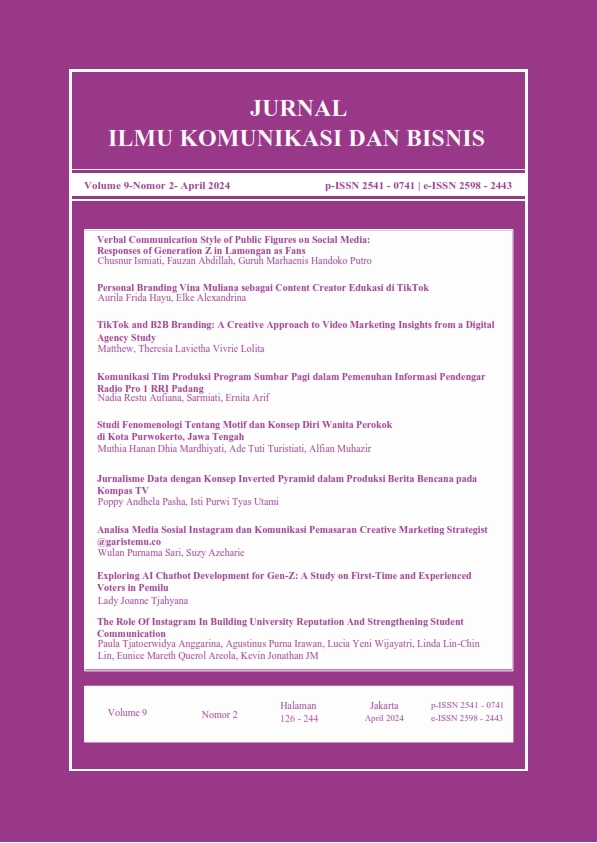Jurnalisme Data dengan Konsep Inverted Pyramid dalam Produksi Berita Bencana Pada Kompas TV
DOI:
https://doi.org/10.36914/g01b3p52Keywords:
Television, News Production, Disaster News, Data Journalism, The Inverted Pyramid of Data JournalismAbstract
Television is still the audience's reference medium for disaster reporting. The immediacy of information, free access, and visualization of events are the strengths of television, which are supported by the data journalism process. The research aims to determine the data journalism process in the production of disaster news on Kompas TV. The inverted pyramid of data journalism from Paul Bradshaw is the main concept of research. The research uses a constructivism paradigm and a qualitative approach with in-depth interviews. The four informants in the research work as executive producers, coverage coordinators, journalists, and graphics coordinators. The research results show that Kompas TV's disaster news production process has implemented the inverted pyramid of data journalism concept. Apart from the results of Kompas R&D research, disaster data is also obtained from research by disaster-related authorities and academic institutions. The uniqueness of data journalism in Kompas TV disaster reporting is found at the context stage, namely by prioritizing human narratives in disaster events. This finding is in line with the ideas of transcendental humanism of one of its founders, Jacob Oetama. The adoption of technology in the form of the Vizrt immersive system is an advantage in the data visualization process. The objectivity of data in disaster reporting is presented while still considering the psychological impact on the audience. The Press Law, the Journalism Code of Ethics, and P3SPS are references in the process of selecting data sources, data analysis, and data presentation.










